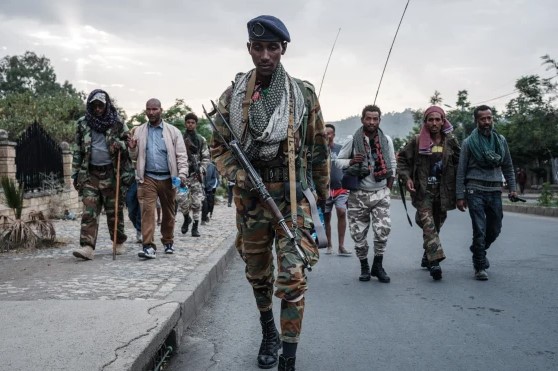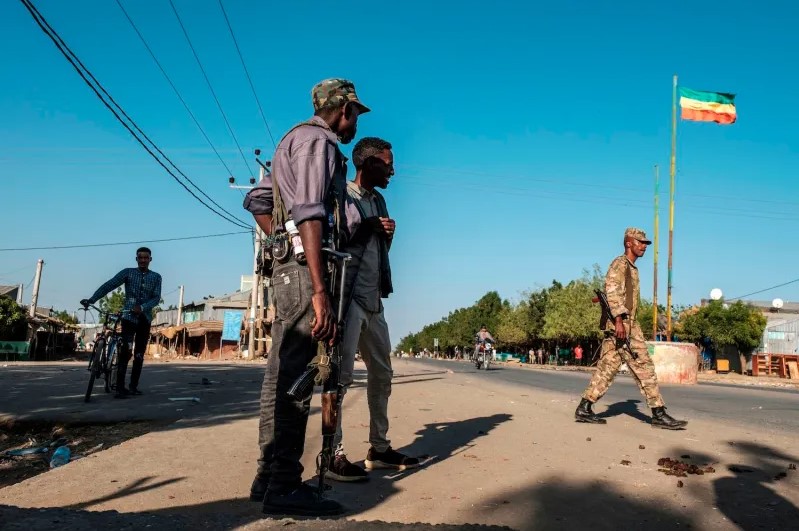Two Years On
Following the signature of the Cessation of Hostilities Agreement, or the Pretoria Agreement in 2022, the War in Tigray came to an end. The Pretoria Agreement, established by the African Union (AU), carried with it a number of different provisions aimed at creating a lasting peace between Tigray and the central Ethiopian Government, and hopefully the whole of Ethiopia.
The African Union has announced it is holding a “strategic review” of the implementation of the Pretoria Agreement, in order to examine whether it has been properly implemented.
The review is to involve of course the AU, the Tigray People’s Liberation Front (TPLF), and the Ethiopian Government, but also international observers from the UN, US, EU, and the Intergovernmental Authority on Development (IGAD, an East African trade bloc of which Ethiopia is a member).
The Chief Administrator of the Tigray Interim Regional Administration, Getachew Reda, who presently heads the administration which presides over Tigray, has described the review as “long over due”, and stated that the full implementation of the agreement is the only way to achieve lasting peace in Ethiopia.
The African Union is hosting a strategic review of the implementation of the Pretoria Cessation of Hostilities Agreement between the Government of Ethiopia and the Tigray People’s Liberation Front (TPLF). This is going to be a forum where the two parties, members of the AU panel
— Getachew K Reda (@reda_getachew) March 7, 2024
The US has sent the ‘Special Envoy for the Horn of Africa’, Mike Hammer, in order to both attend the AU review, as well as to meet with Ethiopian government officials “to discuss efforts to advance dialogue to end the violence in the Amhara and Oromia regions.”
Special Envoy Hammer arrived in Ethiopia on March 7th, and will be leaving on the 13th.
The Pretoria Agreement: Has it been Implemented..?
While the Pretoria Agreement has had a number of successes, it has also had a number of significant failures, several of which have contributed to a potential famine beginning within Tigray.
After it’s signing on November 2nd, 2022, the Pretoria Agreement went into effect the very next day, on November 3rd. The agreement succeeded in “silencing the guns”, and ending the war between the TPLF and the Ethiopian government, Amharas regional forces, and Eritrea. The Agreement succeeded where other numerous ceasefire attempts had failed.
When asking the question of if the Pretoria Agreement has been successfully implemented, the short answer is no.
But how exactly has it been failed to be implemented..?

There are a series of issues presently confronting Tigray. One key part of the Pretoria Agreement which has thus far failed to be implemented is the constitutionally guaranteed representation within the federal government. The agreement calls for Tigray to have representation in the federal government’s House of Federation, and the House of People’s Representatives. To date, Tigray has no representation in the federal government.
Soon after the signature of the Pretoria Agreement, the TPLF handed over all of its heavy weaponry to the central government. While tens of thousands of former TPLF soldiers have been demobilized, there are still well over 200,000 that have yet to be demobilized, highlighting a significant problem. A part of the Pretoria Agreement was the demobilization and eventual reintegration of these fighters. However two years on, a significant portion of these fighters remain mobilized. Reportedly, a number of these individuals maintain easy access to small arms, representing a tense security situation.
Since not long after the outbreak of the Tigray War in 2020, Tigray has been struck by severe hunger issues that have continued to today, which experts are likening to the beginning of the 1983-85 famine in Ethiopia, which killed approximately 300,000-1,200,000 people.
The war and its lasting effects are one of the main contributing factors to this brewing famine. Throughout the war, the vast majority of Tigray’s farm lands were purposefully attacked, looted, and either damaged or destroyed with a number of farms having the soils sabotaged to ensure future difficulties in growing crop. In addition, the Ethiopian and Eritrean governments blockaded Tigray during the war, refusing in the majority of cases to allow the entrance of humanitarian aid.
The Pretoria Agreement demanded for the Ethiopian government to facilitate the entrance of aid to Tigray in order to assist the besieged populations, but the Ethiopian government has taken very little action to ensure the delivery of humanitarian aid.
In March of 2023 both USAID and the World Food Programme (WFP), who had been heading humanitarian aid deliveries to Tigray, halted aid deliveries to Tigray, citing the discovery of a “large scale plot” to steal aid. The halt was extended to the whole of Ethiopia in June of 2023.
Several donors blamed the Ethiopian government for the plot, which the Ethiopian government has dismissed as propaganda.
During this pause, and following the resumption of aid in December, the Ethiopian government has rendered little assistance.
For the past several years a drought has been ongoing throughout east Africa, which has worsened the situation within Tigray. The government has stated they will send assistance for the famine, for which they blame the hunger issues, but has still yet to render any meaningful aid.
Lastly, approximately 40% of Tigray remains occupied by foreign entities, with the majority of Tigray’s west being occupied by Amharas regional forces, and significant portions of Tigray’s north still being occupied by Eritrean forces.

Within the provisions of the Pretoria Agreement, the government is to have soldiers deployed along the “international boundaries” of Ethiopia, as well as to “safeguard the sovereignty, territorial integrity, and security of the country from foreign incursion.”
What the Future Holds
The talks between the TPLF and the Ethiopian government are a step in the right direction with mitigating the extensive crisis facing the region. The government has largely denied the present hunger crisis, which is on the brink of famine. Tigrayan regional authorities have been sounding alarms for several months, however the government accuses them of “politicizing the crisis”, blaming the majority of the problems on the ongoing famine.
While the review of the Pretoria Agreement is likely to come to the conclusion that it is not being properly implemented, it is unclear if any concrete action will actually be taken to ensure its implementation. Ethiopia maintains a large amount of influence within the AU, putting them in a tough position to apply any meaningful pressure.
A number of weeks ago this publication put out a long form report of the present crisis facing Tigray, which may be read here.


